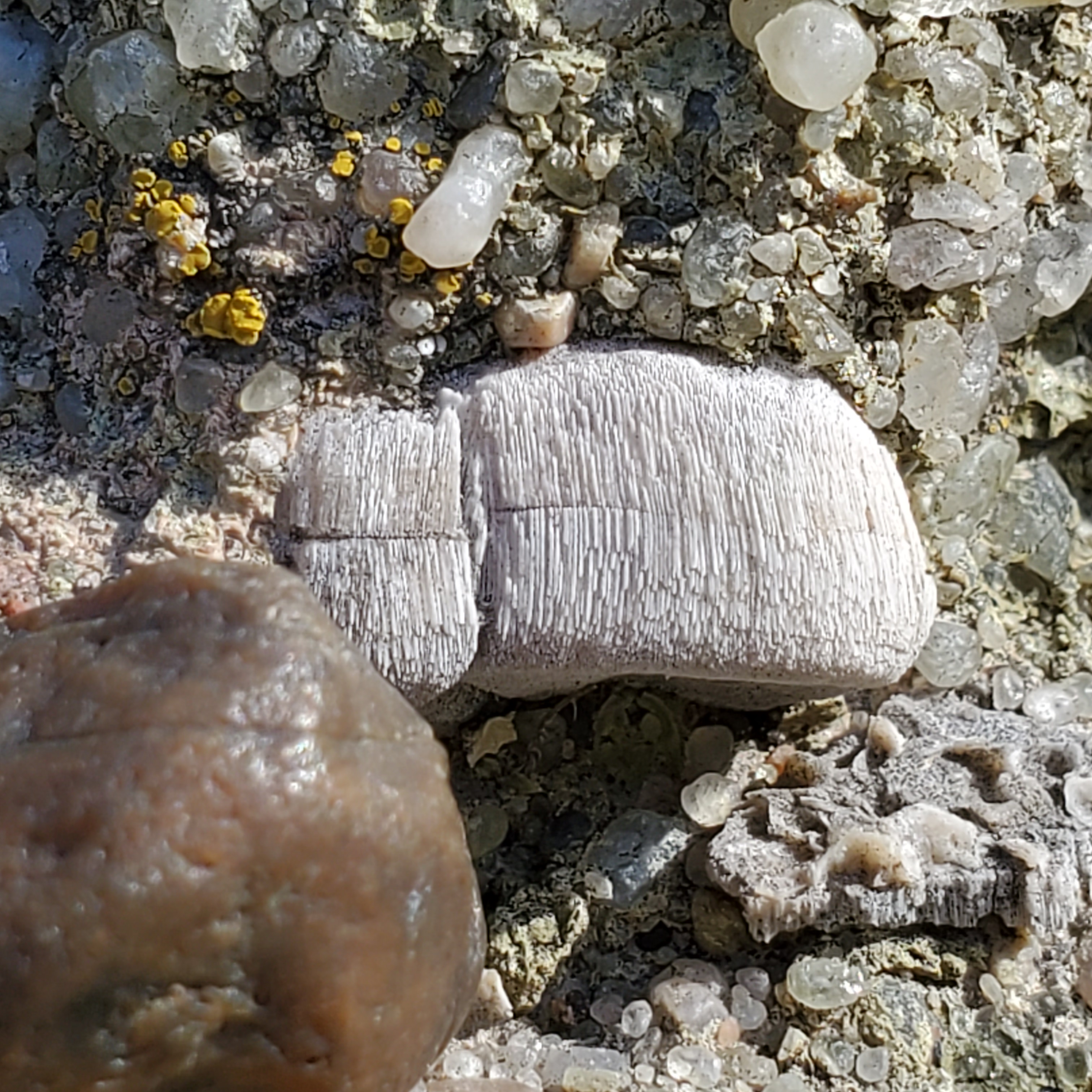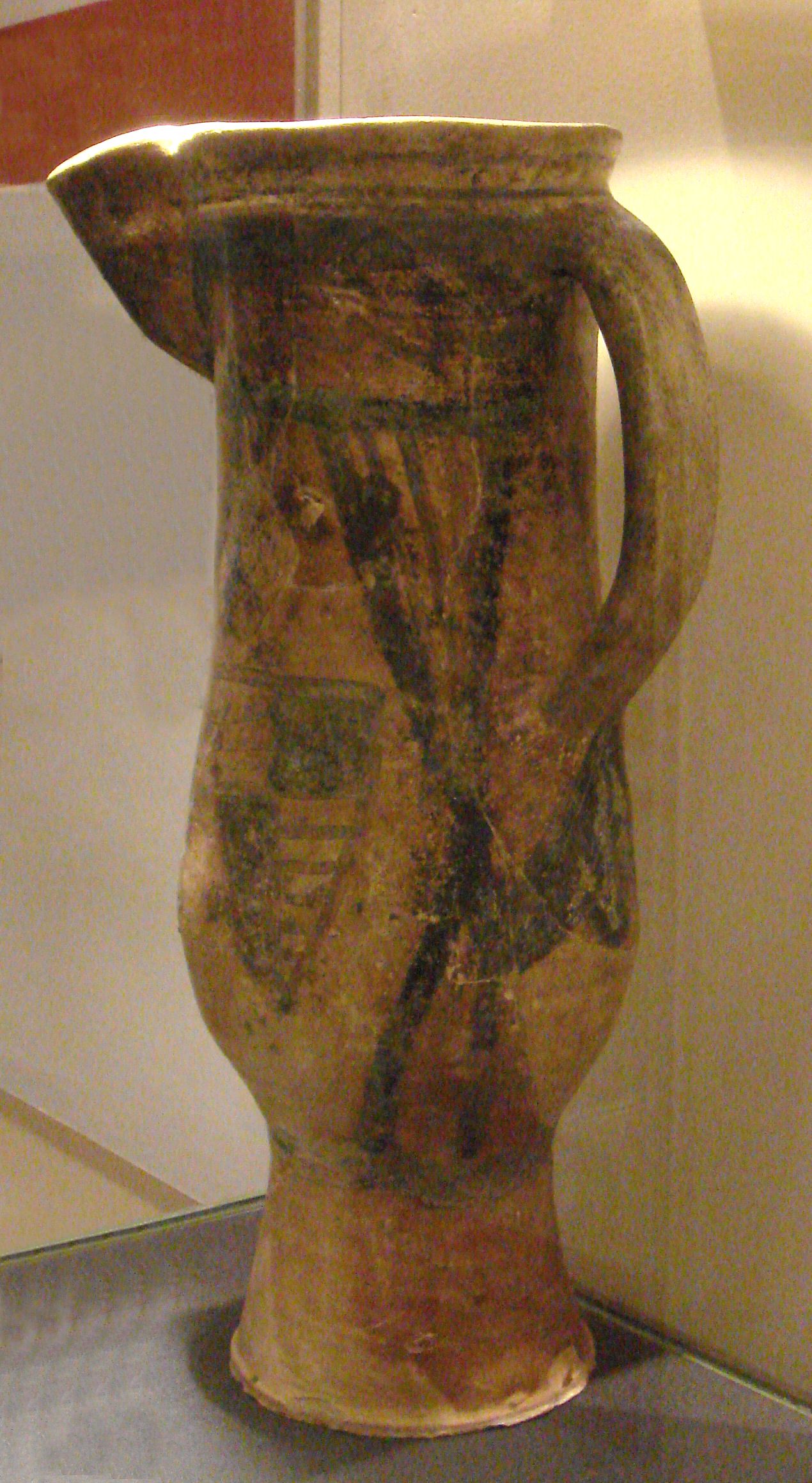|
Coniacian
The Coniacian is an age or stage in the geologic timescale. It is a subdivision of the Late Cretaceous Epoch or Upper Cretaceous Series and spans the time between 89.8 ± 1 Ma and 86.3 ± 0.7 Ma (million years ago). The Coniacian is preceded by the Turonian and followed by the Santonian. Stratigraphic definitions The Coniacian is named after the city of Cognac in the French region of Saintonge. It was first defined by French geologist Henri Coquand in 1857. The base of the Coniacian Stage is at the first appearance of the inoceramid bivalve species '' Cremnoceramus deformis erectus''. The official reference profile for the base (a GSSP) is located in Salzgitter-Salder, Lower Saxony, Germany. The top of the Coniacian (the base of the Santonian Stage) is defined by the appearance of the inoceramid bivalve '' Cladoceramus undulatoplicatus''. The Coniacian overlaps the regional Emscherian Stage of Germany, which is roughly coeval with the Coniacian and Santonian Stages. In ... [...More Info...] [...Related Items...] OR: [Wikipedia] [Google] [Baidu] |
Epoch (geology)
The geologic time scale, or geological time scale, (GTS) is a representation of time based on the rock record of Earth. It is a system of chronological dating that uses chronostratigraphy (the process of relating strata to time) and geochronology (scientific branch of geology that aims to determine the age of rocks). It is used primarily by Earth scientists (including geologists, paleontologists, geophysicists, geochemists, and paleoclimatologists) to describe the timing and relationships of events in geologic history. The time scale has been developed through the study of rock layers and the observation of their relationships and identifying features such as lithologies, paleomagnetic properties, and fossils. The definition of standardized international units of geologic time is the responsibility of the International Commission on Stratigraphy (ICS), a constituent body of the International Union of Geological Sciences (IUGS), whose primary objective is to precisel ... [...More Info...] [...Related Items...] OR: [Wikipedia] [Google] [Baidu] |
Age (geology)
The geologic time scale, or geological time scale, (GTS) is a representation of time based on the rock record of Earth. It is a system of chronological dating that uses chronostratigraphy (the process of relating strata to time) and geochronology (scientific branch of geology that aims to determine the age of rocks). It is used primarily by Earth scientists (including geologists, paleontologists, geophysicists, geochemists, and paleoclimatologists) to describe the timing and relationships of events in geologic history. The time scale has been developed through the study of rock layers and the observation of their relationships and identifying features such as lithologies, paleomagnetic properties, and fossils. The definition of standardized international units of geologic time is the responsibility of the International Commission on Stratigraphy (ICS), a constituent body of the International Union of Geological Sciences (IUGS), whose primary objective is to precis ... [...More Info...] [...Related Items...] OR: [Wikipedia] [Google] [Baidu] |
Henri Coquand
Henri Coquand (1813, in Aix-en-Provence – 1881, in Marseille) was a French geologist and paleontologist. In 1841 he obtained his doctorate in sciences in Paris, and later served as a professor of geology at the University of Besançon, Poitiers and Marseille.Prosopo Sociétés savantes From his geological studies of southwestern France, he introduced the stages: , and |
Cretaceous Magnetic Quiet Zone
The Cretaceous ( ) is a geological period that lasted from about 145 to 66 million years ago (Mya). It is the third and final period of the Mesozoic Era, as well as the longest. At around 79 million years, it is the longest geological period of the entire Phanerozoic. The name is derived from the Latin ''creta'', "chalk", which is abundant in the latter half of the period. It is usually abbreviated K, for its German translation ''Kreide''. The Cretaceous was a period with a relatively warm climate, resulting in high eustatic sea levels that created numerous shallow inland seas. These oceans and seas were populated with now- extinct marine reptiles, ammonites, and rudists, while dinosaurs continued to dominate on land. The world was ice free, and forests extended to the poles. During this time, new groups of mammals and birds appeared. During the Early Cretaceous, flowering plants appeared and began to rapidly diversify, becoming the dominant group of plants across the Earth by t ... [...More Info...] [...Related Items...] OR: [Wikipedia] [Google] [Baidu] |
Turonian
The Turonian is, in the ICS' geologic timescale, the second age in the Late Cretaceous Epoch, or a stage in the Upper Cretaceous Series. It spans the time between 93.9 ± 0.8 Ma and 89.8 ± 1 Ma (million years ago). The Turonian is preceded by the Cenomanian Stage and underlies the Coniacian Stage. At the beginning of the Turonian an oceanic anoxic event (OAE 2) took place, also referred to as the Cenomanian-Turonian boundary event or the "Bonarelli Event". Stratigraphic definition The Turonian (French: ''Turonien'') was defined by the French paleontologist Alcide d'Orbigny (1802–1857) in 1842. Orbigny named it after the French city of Tours in the region of Touraine (department Indre-et-Loire), which is the original type locality. The base of the Turonian Stage is defined as the place where the ammonite species '' Watinoceras devonense'' first appears in the stratigraphic column. The official reference profile (the GSSP) for the base of the Turonian is located ... [...More Info...] [...Related Items...] OR: [Wikipedia] [Google] [Baidu] |
Cognac, France
Cognac (; Saintongese: ''Cougnat''; oc, Conhac ) is a commune in the Charente department, southwestern France. Administratively, the commune of Cognac is a subprefecture of the Charente department. Name The name is believed to be formed from individual masculine name -Connius, Gallic name, and the suffix -acum, which would correspond to the "domain of Connius". History The town of Cognac was unknown before the ninth century, when it was fortified. During the Hundred Years' War, the town continually changed sides, according to the tides of war. In 1526, it lent its name to the War of the League of Cognac, the military alliance established by King Francis I of France to fight against the House of Habsburg. As a benefit of the War League of Cognac, King Francis I granted to the town of Cognac the commercial right to participate in the salt trade conducted along the river, from which regional Cognac developed into a centre for the production of wine and brandy. In Novembe ... [...More Info...] [...Related Items...] OR: [Wikipedia] [Google] [Baidu] |
Cremnoceramus
''Cremnoceramus'' ("cremno-" = ''kremnos'' reek precipice or over hanging wall or bank; "ceramus" = ''keramos'' reek clay pot) is an extinct genus of fossil marine pteriomorphian bivalves that superficially resembled the related winged pearly oysters of the extant genus '' Pteria''. They lived from the Turonian to the Maastrichtian of the Late Cretaceous. Description ''Cremnoceramus'' were facultatively mobile, blind, suspension feeding bivalves with low-magnesium calcite shells. ''Inoceramids'', like the ''Cremnoceramus'' in particular, had thick shells composed of particular "prisms" of calcite deposited perpendicular to the surface, and unweathered fossils commonly preserve the mother-of-pearl luster the shells had in life. Compared to the many examples of broad and flattened ''Inoceramidae'', ''Cremnoceramus'' shells are rather "high-walled", deep bowl-shaped. The top shell is commonly encrusted with oysters. Species The following species are recognized: * ''C. ... [...More Info...] [...Related Items...] OR: [Wikipedia] [Google] [Baidu] |
Santonian
The Santonian is an age in the geologic timescale or a chronostratigraphic stage. It is a subdivision of the Late Cretaceous Epoch or Upper Cretaceous Series. It spans the time between 86.3 ± 0.7 mya (million years ago) and 83.6 ± 0.7 mya. The Santonian is preceded by the Coniacian and is followed by the Campanian.Gradstein ''et al.'' (2004) Stratigraphic definition The Santonian Stage was established by French geologist Henri Coquand in 1857. It is named after the city of Saintes in the region of Saintonge, where the original type locality is located. The base of the Santonian Stage is defined by the appearance of the inoceramid bivalve '' Cladoceramus undulatoplicatus''. The GSSP (official reference profile) for the base of the Santonian Stage is located near Olazagutia, Spain; it was ratified by the Subcommission on Cretaceous Stratigraphy in 2012. The Santonian's top (the base of the Campanian Stage) is informally marked by the extinction of the crinoid '' Marsup ... [...More Info...] [...Related Items...] OR: [Wikipedia] [Google] [Baidu] |
GSSP
A Global Boundary Stratotype Section and Point (GSSP) is an internationally agreed upon reference point on a stratigraphic section which defines the lower boundary of a stage on the geologic time scale. The effort to define GSSPs is conducted by the International Commission on Stratigraphy, a part of the International Union of Geological Sciences. Most, but not all, GSSPs are based on paleontological changes. Hence GSSPs are usually described in terms of transitions between different faunal stages, though far more faunal stages have been described than GSSPs. The GSSP definition effort commenced in 1977. As of 2022, 77 of the 101 stages that need a GSSP have a ratified GSSP. Rules A geologic section has to fulfill a set of criteria to be adapted as a GSSP by the ICS. The following list summarizes the criteria: * A GSSP has to define the lower boundary of a geologic stage. * The lower boundary has to be defined using a primary marker (usually first appearance datum of a ... [...More Info...] [...Related Items...] OR: [Wikipedia] [Google] [Baidu] |
Bivalve
Bivalvia (), in previous centuries referred to as the Lamellibranchiata and Pelecypoda, is a class of marine and freshwater molluscs that have laterally compressed bodies enclosed by a shell consisting of two hinged parts. As a group, bivalves have no head and they lack some usual molluscan organs, like the radula and the odontophore. They include the clams, oysters, cockles, mussels, scallops, and numerous other families that live in saltwater, as well as a number of families that live in freshwater. The majority are filter feeders. The gills have evolved into ctenidia, specialised organs for feeding and breathing. Most bivalves bury themselves in sediment, where they are relatively safe from predation. Others lie on the sea floor or attach themselves to rocks or other hard surfaces. Some bivalves, such as the scallops and file shells, can swim. The shipworms bore into wood, clay, or stone and live inside these substances. The shell of a bivalve is composed ... [...More Info...] [...Related Items...] OR: [Wikipedia] [Google] [Baidu] |
Saintonge (region)
Saintonge (), historically spelled Xaintonge and Xainctonge, is a region of France located on the west central Atlantic coast, corresponding with the former province of the same name. The largest city is Saintes (Xaintes, Xainctes). Other principal towns include Saint-Jean-d'Angély, Jonzac, Frontenay-Rohan-Rohan, Royan, Marennes, Pons, and Barbezieux-Saint-Hilaire. In 1790, during the French Revolution, Saintonge became part of Charente-Inférieure, one of the 83 departments organized by the new government. This was renamed as Charente-Maritime in 1941, during World War II. The region is known for its Romanesque churches. See Saintonge Romane (Éditions Zodiaque) - 'sa richesse en monuments l'emporte sur tout autre', p.7 History The region derives its name from the '' Santones'', an ancient Gallic tribe that once inhabited the area. They were one of the numerous Celtic peoples in Europe before the rise of the Roman Empire. During antiquity, Saintonge was part of ... [...More Info...] [...Related Items...] OR: [Wikipedia] [Google] [Baidu] |




